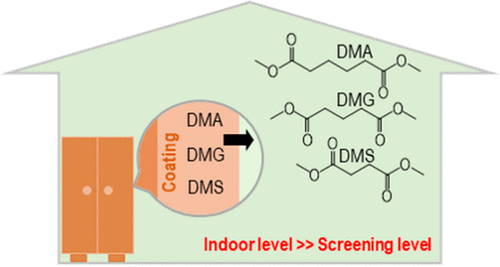当前位置:
X-MOL 学术
›
Environ. Sci. Technol. Lett.
›
论文详情
Our official English website, www.x-mol.net, welcomes your feedback! (Note: you will need to create a separate account there.)
Dibasic Esters Observed as Potential Emerging Indoor Air Pollutants in New Apartments in Beijing, China
Environmental Science & Technology Letters ( IF 10.9 ) Pub Date : 2021-05-07 , DOI: 10.1021/acs.estlett.1c00198 Jia Qiu 1 , Di Xie 1, 2 , Yatai Li 1, 2 , Yuekun Qu 1 , Ying Liu 1, 2 , Tong Zhu 1, 2 , Yingjun Liu 1, 2
Environmental Science & Technology Letters ( IF 10.9 ) Pub Date : 2021-05-07 , DOI: 10.1021/acs.estlett.1c00198 Jia Qiu 1 , Di Xie 1, 2 , Yatai Li 1, 2 , Yuekun Qu 1 , Ying Liu 1, 2 , Tong Zhu 1, 2 , Yingjun Liu 1, 2
Affiliation

|
Volatile organic compounds (VOCs) emitted from building and furnishing materials represent a major concern of indoor air quality, in particular in new buildings. We carried out multiweek nontargeted VOC measurements in 10 new apartments in Beijing, China, using online chemical ionization mass spectrometry. Dimethyl esters of succinic, glutaric, and adipic acids, which are rarely known for their presence in indoor air, were identified in three apartments. The identification was confirmed using authentic standards and by gas chromatography/mass spectrometry analysis. Despite varying concentrations, the three compounds exhibited largely consistent ratios across the three apartments and throughout the observation periods. The observed ratios resemble chemical composition of dibasic esters (DBE), which are a solvent mixture of the three compounds and have been used in the coating industry. A field “sniffing” experiment further confirms DBE emissions from the coatings of some wooden furniture in at least one apartment. The average airborne DBE concentrations in the three apartments were 41, 5, and 4 μg/m3, respectively, exceeding the screening level of 1 μg/m3 recommended by the Michigan Department of Environmental Quality, United States. In the context of fast-growing DBE usage, the current results suggest that DBE might be emerging indoor air pollutants and merit further investigation.
更新日期:2021-06-08



























 京公网安备 11010802027423号
京公网安备 11010802027423号